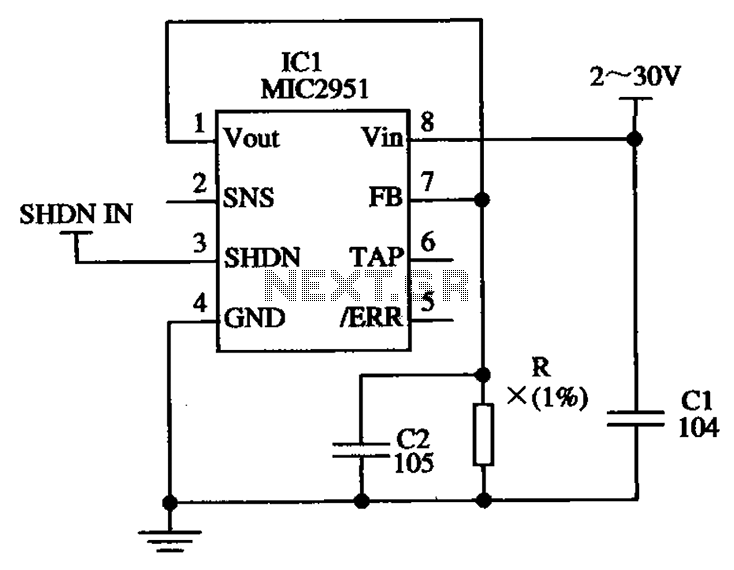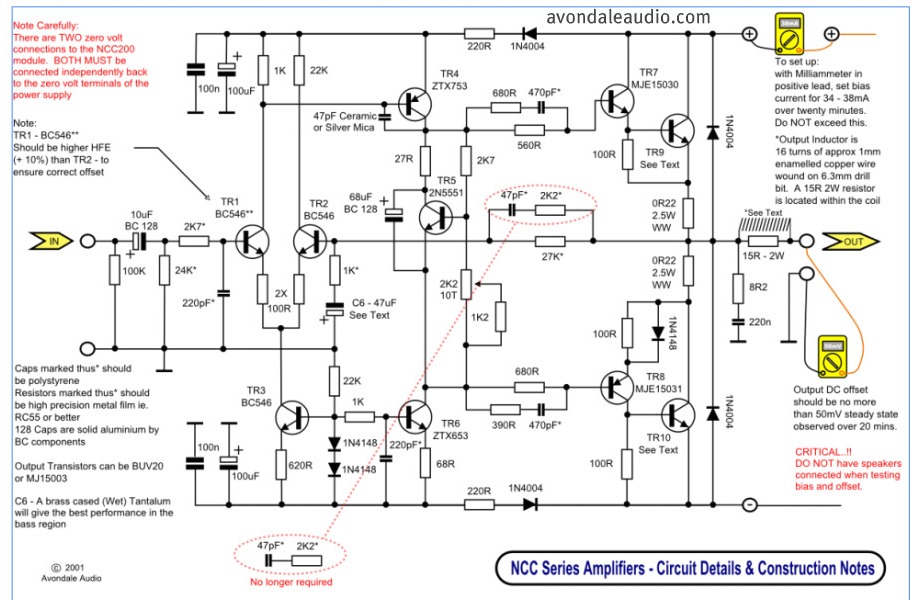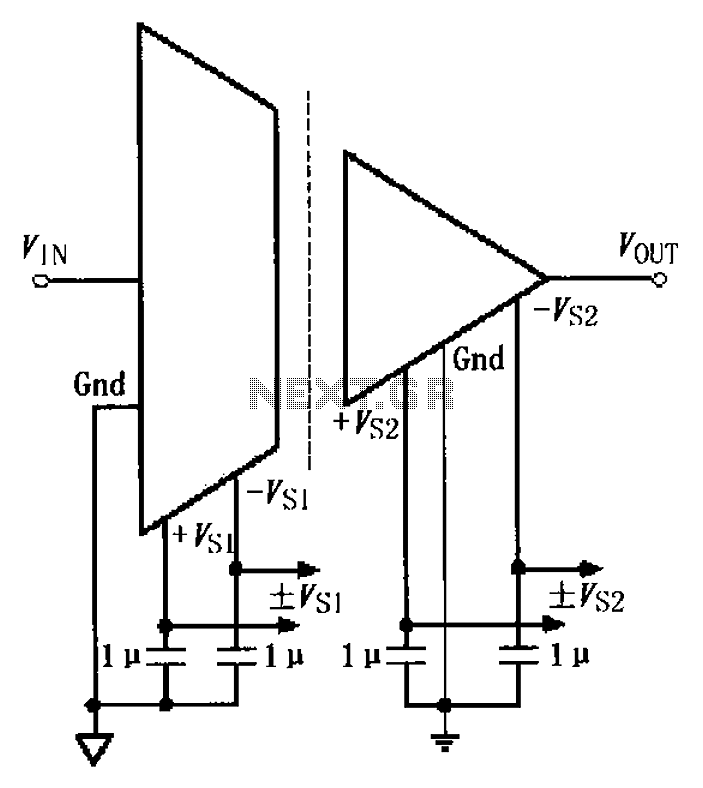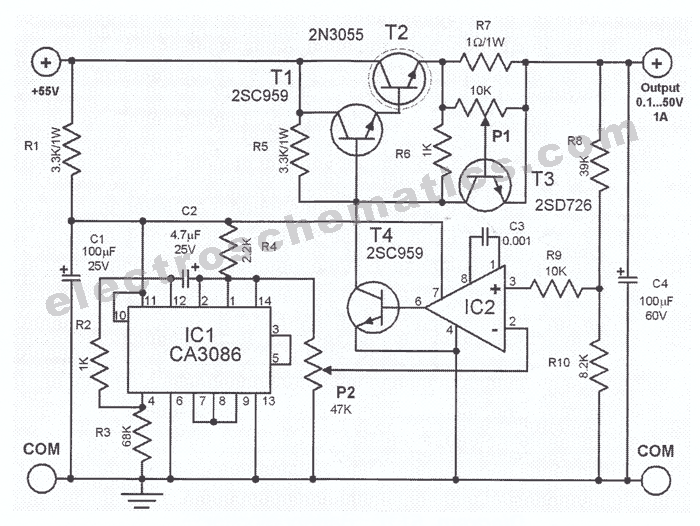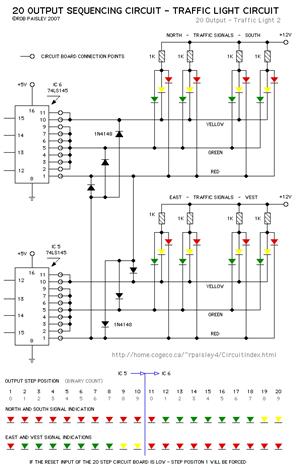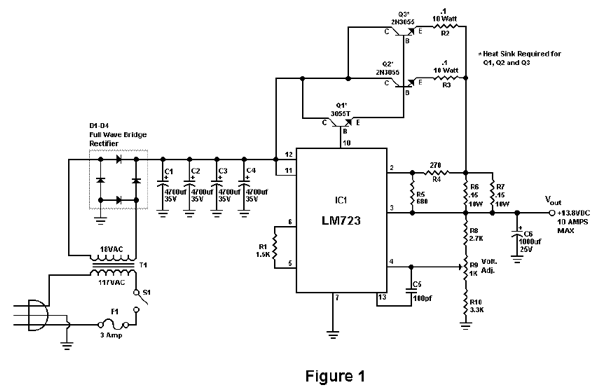
Homemade whole integrated circuit amplifiers 01
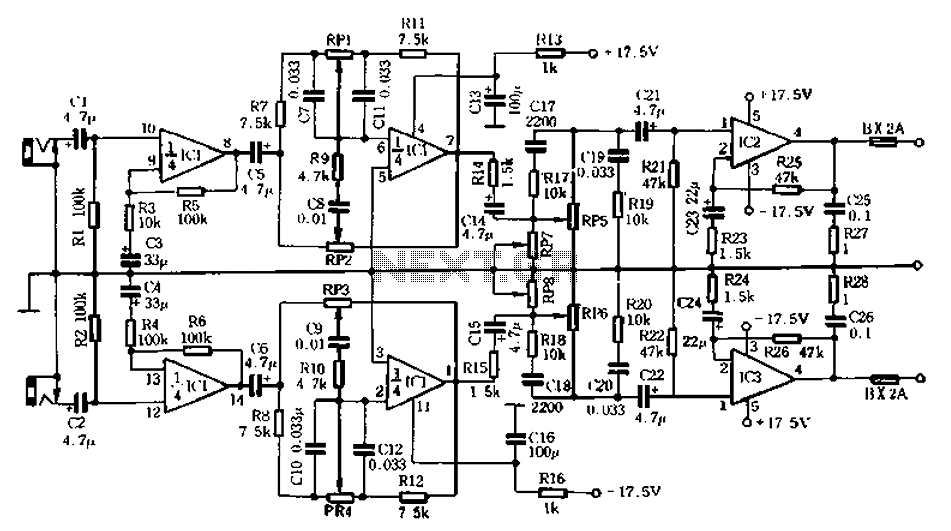
The circuit depicted in Figure 5-60 and Figure 6 utilizes an operational amplifier (op-amp) configured as a channel pre-amplifier to address the signal loss introduced by the tone control circuit. Additionally, another group of op-amps forms a channel-driven stage amplifier circuit designed to provide sufficient excitation voltage to port RP11. Components RP4 and others contribute to the two-channel bass adjustment circuit, while components RP2, RP3, and others are arranged into treble adjustment circuits for both channels. The two-channel volume control circuit functions as a loudness control circuit using components RP5 and RP6. At lower volume levels, the bass response can be enhanced accordingly. Components RP7 and RP8 allow for adjustment of the output balance between the left and right channel volumes. The power amplifier circuit employs the TDA2030 IC, which is housed in a V-shaped, five-pin single in-line plastic package, making it compact. When powered by an 18V supply, the load can yield an output power of no less than 8 watts with a distortion rate below 0.5%. Figures 5-61 illustrate the appearance of the M324 and TDA2030 ICs.
The circuit design integrates several key features that enhance audio performance and user control over sound characteristics. The operational amplifier serves as a crucial component in the pre-amplification stage, ensuring that the audio signal maintains clarity and integrity despite the inherent losses from tone adjustments. The configuration of the op-amps allows for flexible channel management, enabling independent bass and treble adjustments through the designated components.
The bass adjustment circuit, utilizing resistors such as RP4, provides users with the ability to manipulate low-frequency response, enhancing the depth and richness of audio output. Similarly, the treble adjustment circuit, composed of RP2 and RP3, allows for fine-tuning of high-frequency sounds, ensuring a balanced audio experience across different genres of music.
The volume control mechanism, facilitated by RP5 and RP6, not only manages the loudness but also incorporates a loudness contour feature, which can boost bass frequencies at lower volume settings, catering to listeners who prefer a fuller sound even at reduced levels. The inclusion of output balance controls (RP7 and RP8) further enhances the user experience by allowing for precise adjustments to the stereo soundstage, ensuring that both left and right channels are perfectly matched to the listener's preference.
The power amplification stage, utilizing the TDA2030 IC, is designed for efficiency and compactness. Its ability to deliver substantial output power while maintaining low distortion levels makes it suitable for a variety of audio applications. The V-shaped package design not only minimizes space requirements but also facilitates heat dissipation, which is critical for maintaining performance during extended use.
Overall, this circuit exemplifies a well-thought-out design that combines functionality with user-friendly features, making it an effective solution for enhancing audio playback in various settings. Circuit shown in Figure 5-60 in Figure 6 by the operational amplifier IC op amp set up a channel pre-amplifier to compensate for the loss of tone control circuit caused by inse rtion. Another group of op amp one channel driven stage amplifier circuit to obtain sufficient excitation voltage port RP11. RP4 and other components of the two-channel bass adjustment circuit; RP2, RP3 and other components group into treble adjustment circuits for both channels.
Two-channel volume control circuit is a loudness control circuit t by the RP5.RP6 metadata such pieces of composition. When the smaller volume, bass can be improved accordingly. RP7 RP8 can adjust the output balance of the left and right channel volume. Power amp circuit TDA2030 IC, its shape is V-shaped five-pin single in-line plastic package, the volume is small.
When using when 18V power supply, the load can be obtained not less than 8,0 isw output power armor distortion less than 0.5%. As shown in Figure 5-61 are l. M324 and Tf) A2030 appearance.
The circuit design integrates several key features that enhance audio performance and user control over sound characteristics. The operational amplifier serves as a crucial component in the pre-amplification stage, ensuring that the audio signal maintains clarity and integrity despite the inherent losses from tone adjustments. The configuration of the op-amps allows for flexible channel management, enabling independent bass and treble adjustments through the designated components.
The bass adjustment circuit, utilizing resistors such as RP4, provides users with the ability to manipulate low-frequency response, enhancing the depth and richness of audio output. Similarly, the treble adjustment circuit, composed of RP2 and RP3, allows for fine-tuning of high-frequency sounds, ensuring a balanced audio experience across different genres of music.
The volume control mechanism, facilitated by RP5 and RP6, not only manages the loudness but also incorporates a loudness contour feature, which can boost bass frequencies at lower volume settings, catering to listeners who prefer a fuller sound even at reduced levels. The inclusion of output balance controls (RP7 and RP8) further enhances the user experience by allowing for precise adjustments to the stereo soundstage, ensuring that both left and right channels are perfectly matched to the listener's preference.
The power amplification stage, utilizing the TDA2030 IC, is designed for efficiency and compactness. Its ability to deliver substantial output power while maintaining low distortion levels makes it suitable for a variety of audio applications. The V-shaped package design not only minimizes space requirements but also facilitates heat dissipation, which is critical for maintaining performance during extended use.
Overall, this circuit exemplifies a well-thought-out design that combines functionality with user-friendly features, making it an effective solution for enhancing audio playback in various settings. Circuit shown in Figure 5-60 in Figure 6 by the operational amplifier IC op amp set up a channel pre-amplifier to compensate for the loss of tone control circuit caused by inse rtion. Another group of op amp one channel driven stage amplifier circuit to obtain sufficient excitation voltage port RP11. RP4 and other components of the two-channel bass adjustment circuit; RP2, RP3 and other components group into treble adjustment circuits for both channels.
Two-channel volume control circuit is a loudness control circuit t by the RP5.RP6 metadata such pieces of composition. When the smaller volume, bass can be improved accordingly. RP7 RP8 can adjust the output balance of the left and right channel volume. Power amp circuit TDA2030 IC, its shape is V-shaped five-pin single in-line plastic package, the volume is small.
When using when 18V power supply, the load can be obtained not less than 8,0 isw output power armor distortion less than 0.5%. As shown in Figure 5-61 are l. M324 and Tf) A2030 appearance.
